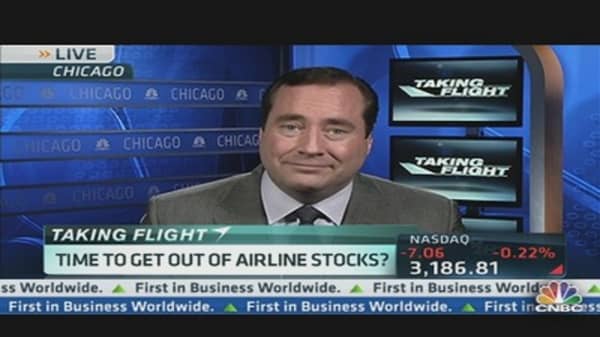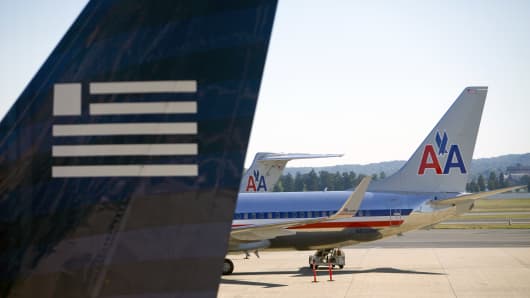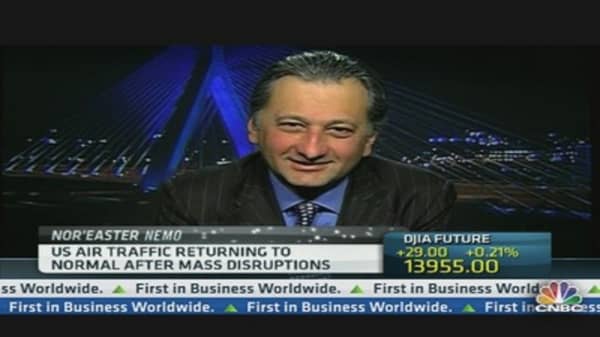The new business model in the airline industry is to sell fewer seats for more money. When they expand service it will primarily be to the big markets or on international routes where they can drive stronger pricing along with more seats. This is the reason airlines are profitable again. Investors have enthusiastically responded by pushing airline stocks higher.
Consolidation Eliminating Airlines
Once US Airways and American Airlines merge, the number of major carriers in the U.S. will be reduced to four. Just a few years ago it stood at seven.
The consolidation of major airlines has been a huge catalyst for airline stocks and for good reason. As the big airlines have merged,they've stripped out service. Instead of six flights a day (between the two airlines) into a particular city, they are only making four or five. It's another way they have limited capacity.
The question now is what happens once US Airways and American finally complete their deal. Sure, there will be discussion about somebody taking a run at Alaska Air, JetBlue, or Hawaiian Air. In reality, none of those are a logical fit and would offer only limited benefits to whoever they merge with.
This is why many believe the end of the US Air/AMR courtship will also mark the end of the consolidation "play" among airline investors.
—By CNBC's Phil LeBeau; Follow him on Twitter @LeBeauCarNews






